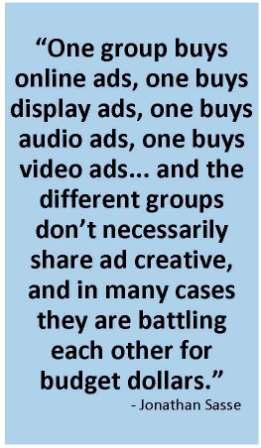
TORONTO – While the market opportunity for mobile advertising is ripe, the underlying infrastructure is still not mature enough in terms of advertising metrics, geo-location and virtual wallet technologies, according to a panel of industry experts who spoke Wednesday during the Digital Media Summit, being held in Toronto as part of Canadian Music Week.
In order to sell mobile ad packages to media buyers, digital content publishers need to have the metrics to back up their pitches, said Jonathan Sasse, senior vice-president of marketing for Slacker Personal Radio. Publishers need to be able to show who their audience is, how they interact with them, and where they are able to reach them, Sasse said.
“Over the years, the web has developed such phenomenal tracking and reporting metrics, but mobile has taken some time to get there,” he added.
Media buyers in the online world are familiar with CPM (cost per thousand impressions) and want the same kind of metrics for mobile advertising campaigns, said the panel’s moderator, Gary Schwartz, author and CEO of Impact Mobile Inc., a Toronto-based mobile marketing services provider.
To illustrate that point, panellist Karen Gordon, director of online sales for the NHL, shared a story about a client meeting she had earlier in the day. Gordon met with the client to recap the results of a recent advertising campaign and to also try to sell the client on an advertising package for the upcoming playoff season.
One of the pitched advertising packages included several customer touchpoints, such as television, online, video, feature articles, real-world experience, social media and mobile, Gordon explained. “At the end of the meeting, the only question the client had was: ‘How many impressions am I going to get in each of these areas and what is the cost?’” she said.
As the director of digital marketing and communications for Aeroplan Canada, Tarik Qahawish was able to offer the perspective of a media buyer. One challenge for Aeroplan is its advertising campaigns are divided into three different areas – travel, financial and retail. “So how do you make sure the mobile social campaign fits into one of those three centres, because you can’t have a one size fits all,” Qahawish said. “And how do you integrate the rest of the campaign (with the mobile campaign)? That actually has been the biggest challenge.”

Slacker Radio’s Sasse said there is a general problem of media buyers still being very siloed, in terms of how they buy advertising. “When you have all of these multiple touchpoints, many of the agencies and clients are siloed in such a way that one group buys online ads, one buys display ads, one buys audio ads, one buys video ads,” Sasse said. And the different groups don’t necessarily share ad creative, and in many cases they are battling each other for budget dollars, Sasse said.
“So it can be a challenge to produce a cohesive campaign, when in many cases the buyers themselves aren’t acting as a cohesive team.”
All three panellists expressed interest in the mobile advertising opportunity for geo-location-based targetted ads. However, both Aeroplan’s Qahawish and the NHL’s Gordon said their organizations have had several challenges in that area. “When it comes to mobile location data, it seems to be nice and sexy on the front end,” said Qahawish. “But once you start digging in – not because there’s something wrong with the data – it’s really hard to leverage it on a real-time basis.”
Qahawish explained Aeroplan uses customers’ transactional history to target ads specific to their interests. However, it becomes a challenge to use that customer data in real-time to deliver location-based advertising, Qahawish said. “If somebody is driving and they opt in to receive geo-location offers, by the time I tap into their profile and know where they are and go back into the system in the cloud and find an offer, the customer is gone because he’s already passed by,” Qahawish said.
Gordon said the main hurdle for the NHL has been getting enough data from mobile providers to do geo-location-based advertising on any kind of local level. “We’re not really there yet in Canada,” Gordon said. “I think the telcos have restricted information that they’re able to gather to really geo-code it well. Speaking for the NHL, we can do provincial and national, and that’s about it. To try to home in on anything else, we just don’t have enough data to do it well. So I think a lot of work has to be done in the Canadian marketplace.”
Impact Mobile’s Schwartz pointed out that delivering location-based ads effectively actually requires mobile users to download an app that reveals their GPS location.
In late February, Aeroplan launched an app for iPhone and iPad that turns customers’ mobile devices into a virtual Aeroplan card. “The most important thing for us is we want to ensure our members are carrying their card,” Qahawish said.
Customers can show their virtual card when checking into a hotel or making purchases at Aeroplan’s retail partners, he explained. The next step will be to make the virtual card actually functional at a point-of-sale location, Qahawish said. “And what we’ve been hearing today is that it’s very tough to do. So we’re just putting it out there to see what the adoption is going to be… There are obviously challenges within the existing POS systems.”
Qahawish said virtual card and wallet technology is just not there yet to enable Aeroplan to do end-to-end redemption transactions at the point of sale.
“But that doesn’t mean that you shouldn’t start preparing for it,” Qahawish said. “You need to start building it into your own ecosystem. And then once the NFC (Near-field communication) or Google Wallet comes in, you’re ready.”



